Art of the Americas
1/38
There's no tags or description
Looks like no tags are added yet.
Name | Mastery | Learn | Test | Matching | Spaced |
|---|
No study sessions yet.
39 Terms
Postclassical Mesoamerica
(1200-1521) Historically, most art that survives had a religious/ ritual function
* God to many Meso-American (pre-Aztec) peoples (Maya later)
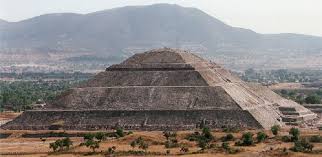
* 2 hours northeast of Mexico city
* Also known as the “Temple of the Sun (foreground) and Moon (background)
* 100 BCE - 700 AD
* 180 ft high
* Meso-American
* “Birthplace of Gods”
* Parts were vacated really quickly by wealthy/priestly
* Lower class possibly outcasted the wealthy/evidence of fire
* Important historical site
\
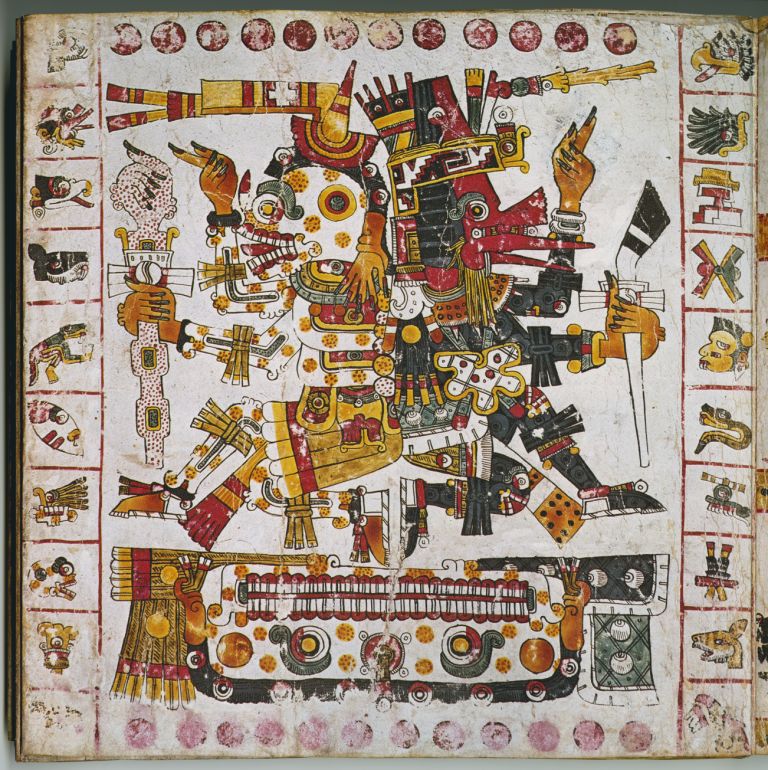
* illuminated page from the Borgia Codex
* c. 1400-1500. Mexico.
* Mineral and vegetable pigments on deerskin
* approx 10”x10
\
* The gods of life (Quetzalcoatl) and death (Mictlantecuhtli) above an inverted skull symbolizing the Underworld

* Xochicalco, Mexico
* Meso-American (Pre-Aztec).
* c. 800 CE
\
* Religious/Ritual site
* Had a ball court
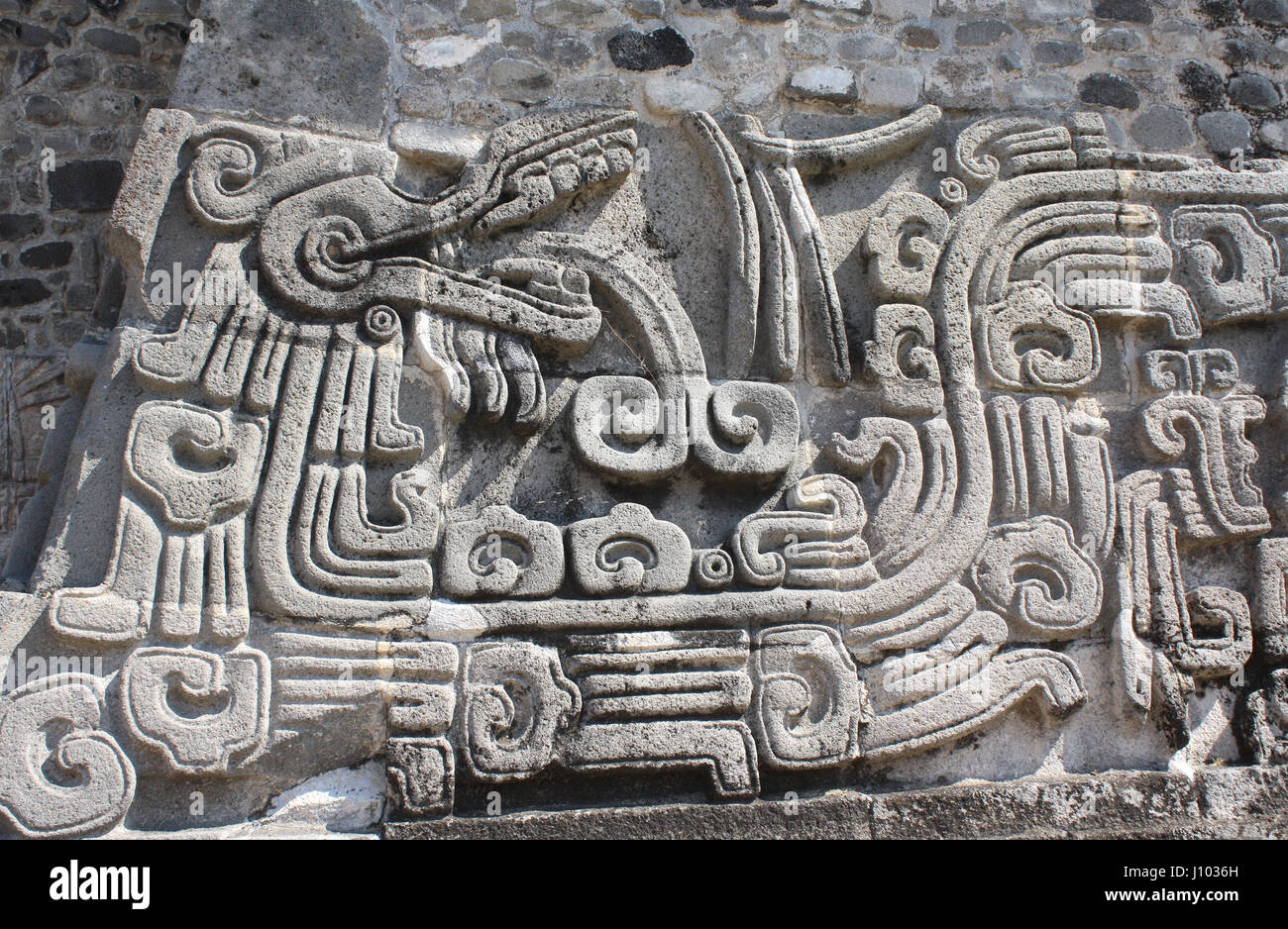
* Tried to get the balls through the hoop without hands (hips or forearm)
* Losing would result in death
* Symbolizing cosmic struggle
* Found in most sacred sites
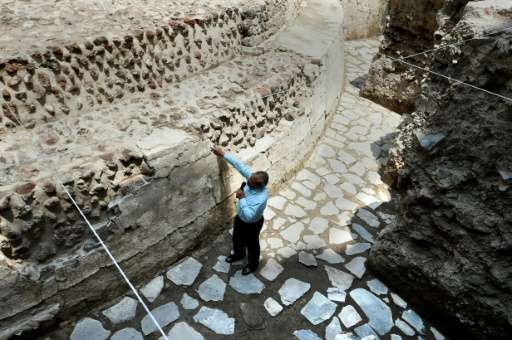
Huitzilopochtli
Eagle/hummingbird god of war, sun and human sacrifice
Patron god of the Aztec and of Tenochtitlan
Coatlicue
She of the serpent skirt, mother of Huizilopochtli (god of the sun
Coyolxauqui
Sister of Huitzilopochtli, goddess of the moon and the 400 stars
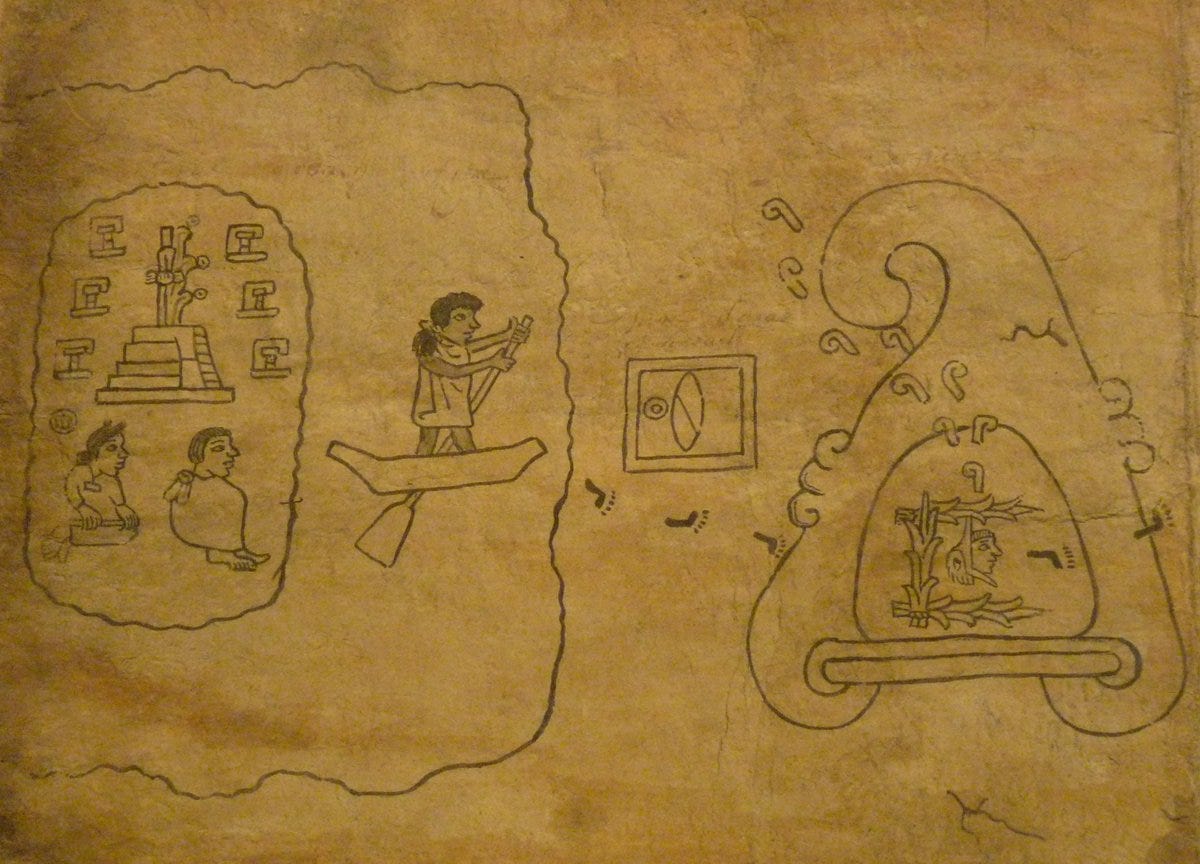
Boturini Codex, 19th C. reproduction after original
c. 1530-1541.
18 feet long; 22 panels.
Chronicling the Aztecs 200 yr. journey from Aztlan to the Valley of Mexico
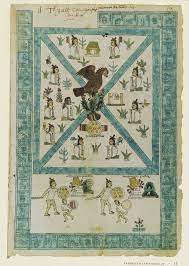
The founding of Tenochtitlán, folio 2 recto of the Codex Mendoza, Aztec,
c. 1540.
Ink and color on paper
How did the aztecs settle?
According to Aztec legend, an eagle landed on a cactus on
an island in the midst of Lake Texcoco, where the god of
war instructed them to settle.
- Eagle: Huitzilopochtli
- Serpent: Quetzalcoátl
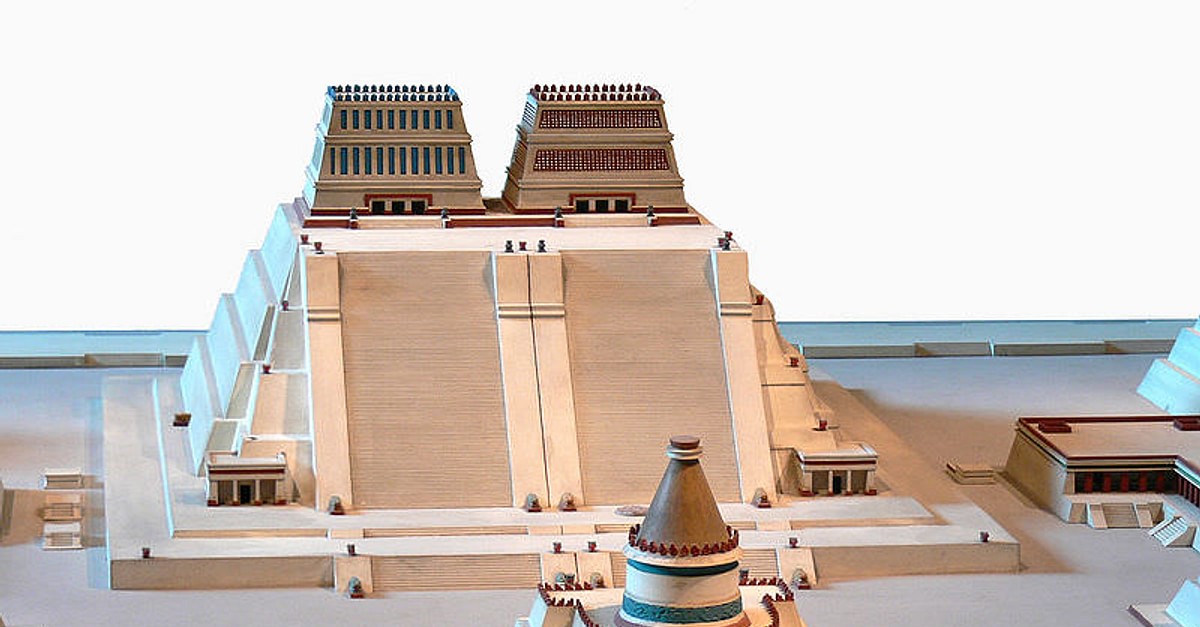
Tenochtitlan
Aztec capital
1325-1521 CE
One of the 3 largest cities in the world
In the center was the Temple Mayor and the “sacred precinct
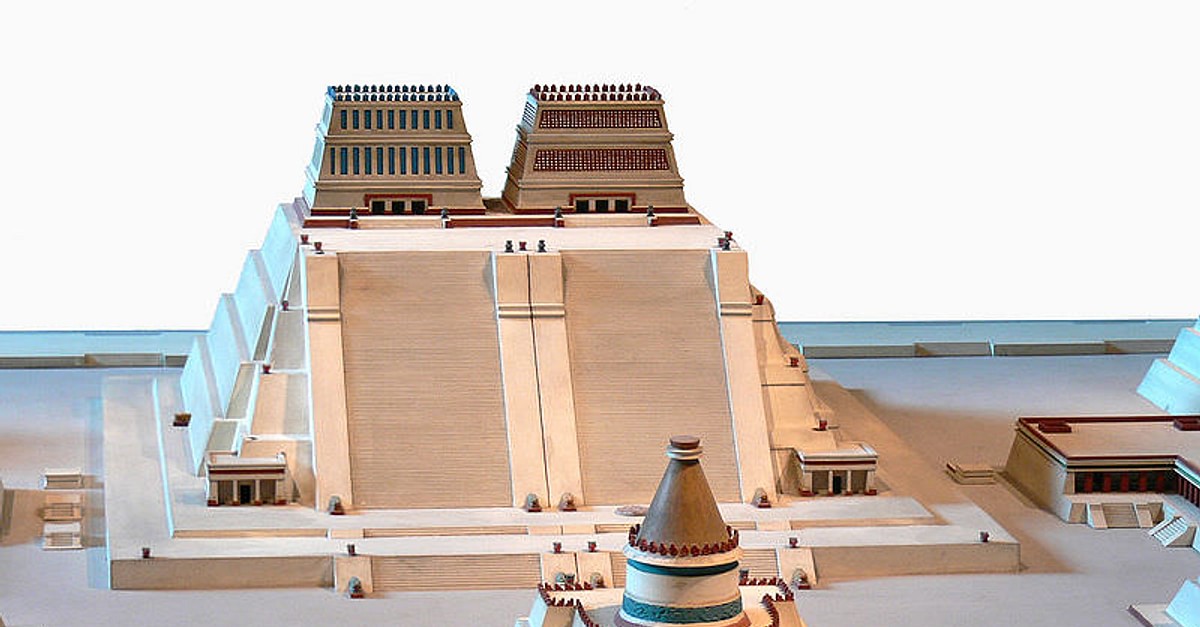
Temple Mayor
2 temples up top
North one was dedicated to Tlaloc (Rain god)
South one was dedicated to Huitzilopochtli (Solar god)
2 steep staircases led up the west face
Sacrificial victims would climb the stairs to Huitzilopochtli’s temple where priests would throw them over stones and cut them open
The body would then be thrown down the staircase and dismembered
Dismembered heads would have been kept on a skull rack in the plaza
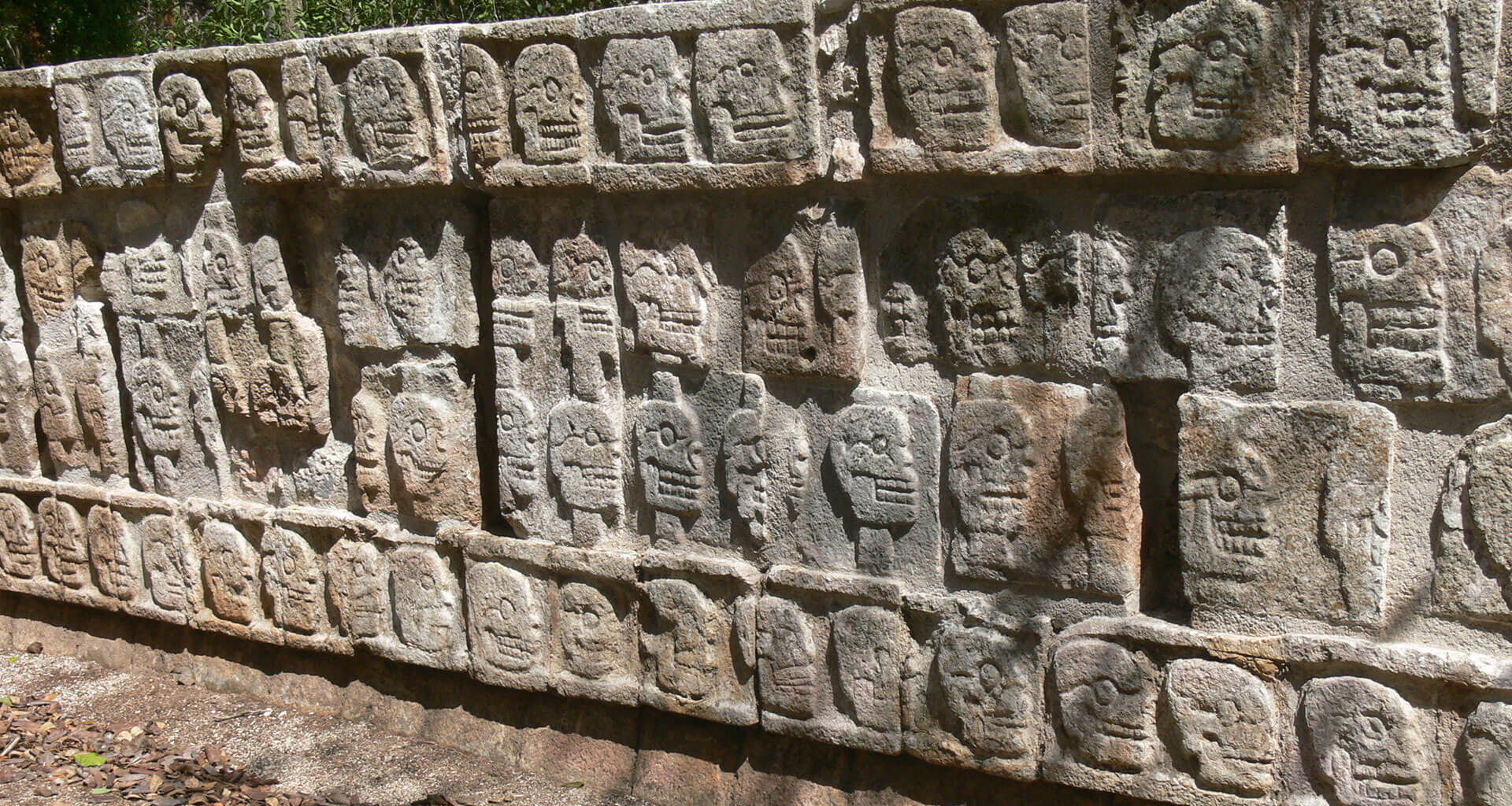
Tzompantli Altar
Altar of the skulls
Detailed the side walls with stucco-covered and painted carved human skulls
1502
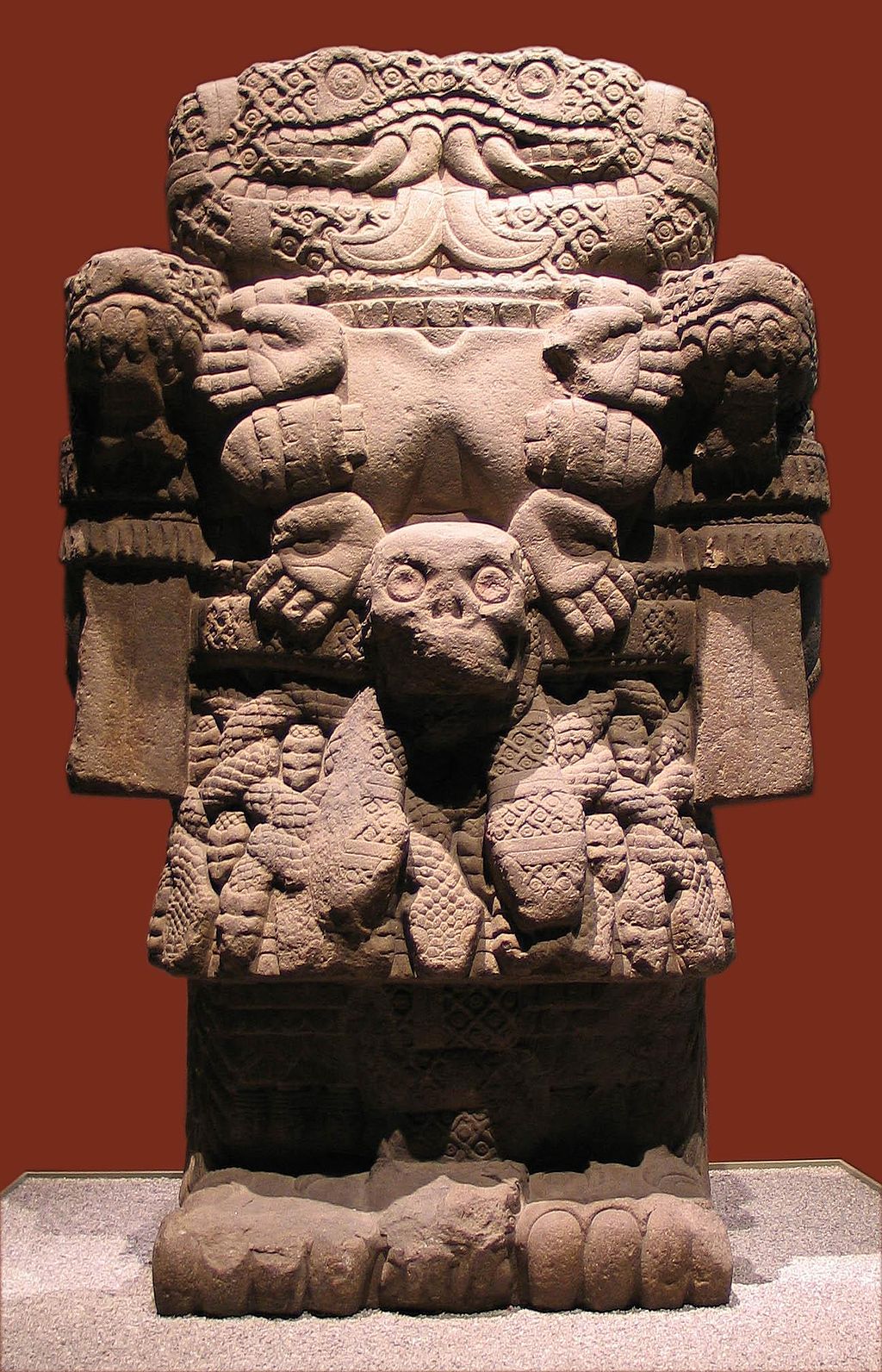
Coatlicue (She of the Serpent Skirt),
Aztec, from Tenochtitlan, Mexico City,
c. 1487-1520.
11’6” high.
The Temple Mayor, built for Huitzilopochtli, commemorated the god’s victory over his sister and 400 brothers who had planned to kill their mother Coatlicue to prevent him from being born.
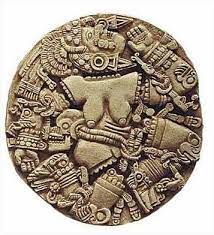
Coyolxauhqui (Moon goddess of the bells),
from the Great Temple of Tenochtitlan, Mexico City,
c. 1469.
stone.
10’ 10”
After bodies were killed and thrown down the stairs they would land on this platform
Spanish conquest of the Aztecs by…
Spanish Conquistador Hernán Cortés: 1519-152
The Spaniards arrived on the first day of the year that
the return of Quetzalcoatl (god of life) was predicted.
Inca
1200-1532
Viracocha
creator god/ substance from which all
things are created
Inca expansion
Approx 130 years
At it’s height, extended 2,500 miles from present day Equador to southern Chile
Ruled as many as 12 million people who spoke at least 20 languages
“Land of the Four Quarters”
Quipus
Form of communication/writing for the Inca
Messengers would relay information from checkpoint to checkpoint
Each knot/string color coded something important such as..
census
history
poetry
astronomy
tribute
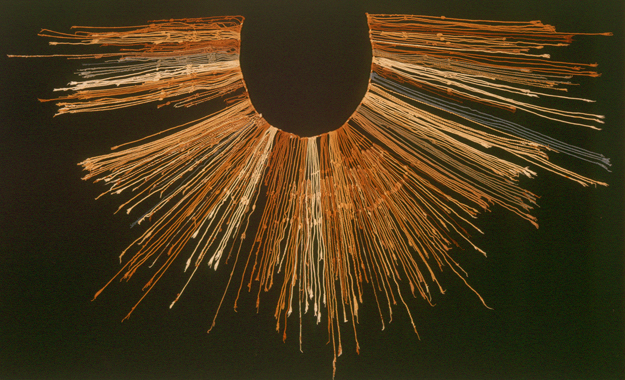
Cusco
“Navel of the world”
Inca capital
Designed by Inca Pachacuti (1438-1471)
Shaped like a puma
Head of the puma was fortress Sacsayhuman
Belly was the giant plaza at the center town
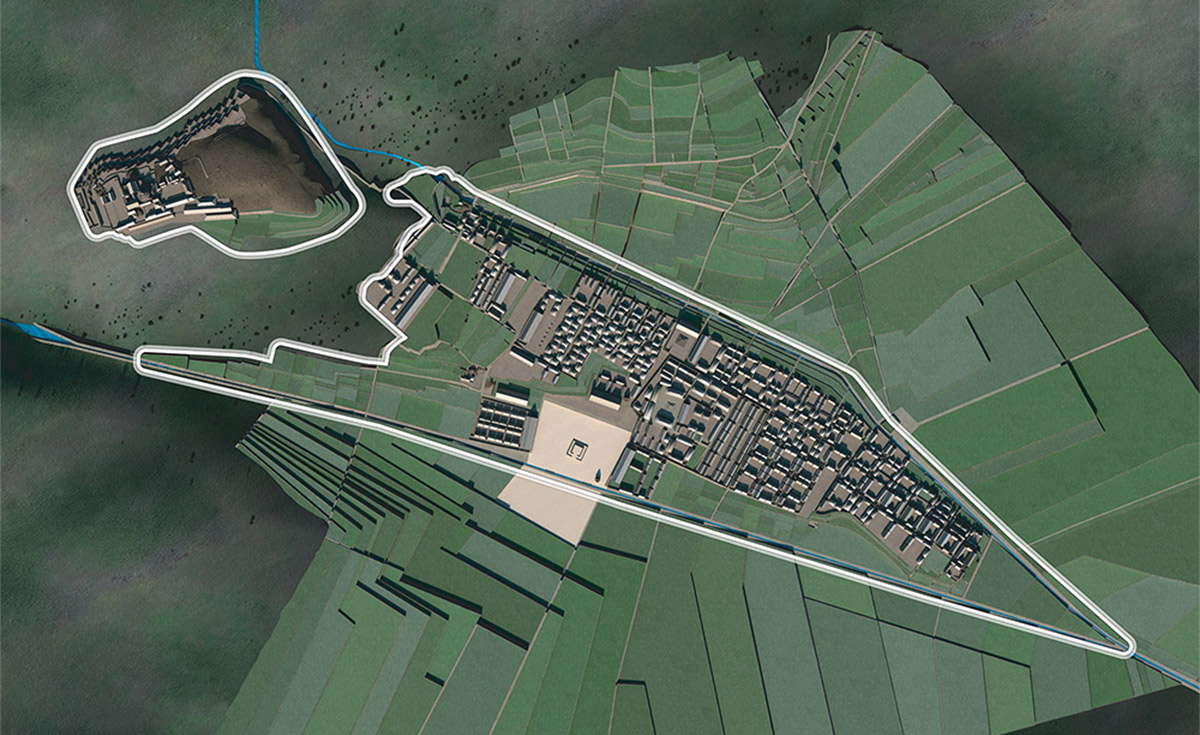
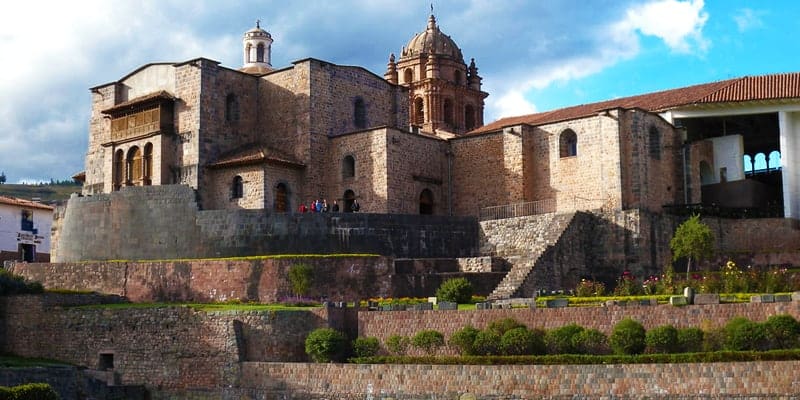
Temple of the Sun (Coricancha) dedicated to Inti, the sun/ Santo Domingo Convent,
Cusco, Peru
Inca Masonry
The masonry of the Inca is so carefully constructed, without mortar
it is impossible to insert a sheet of paper between two stones.
The Inca had no iron tools or wheeled vehicles, yet they managed to quarry and move stones that weighed more than 100 tons.
The work was carried out by individuals fulfilling labor obligations to the state (mita).
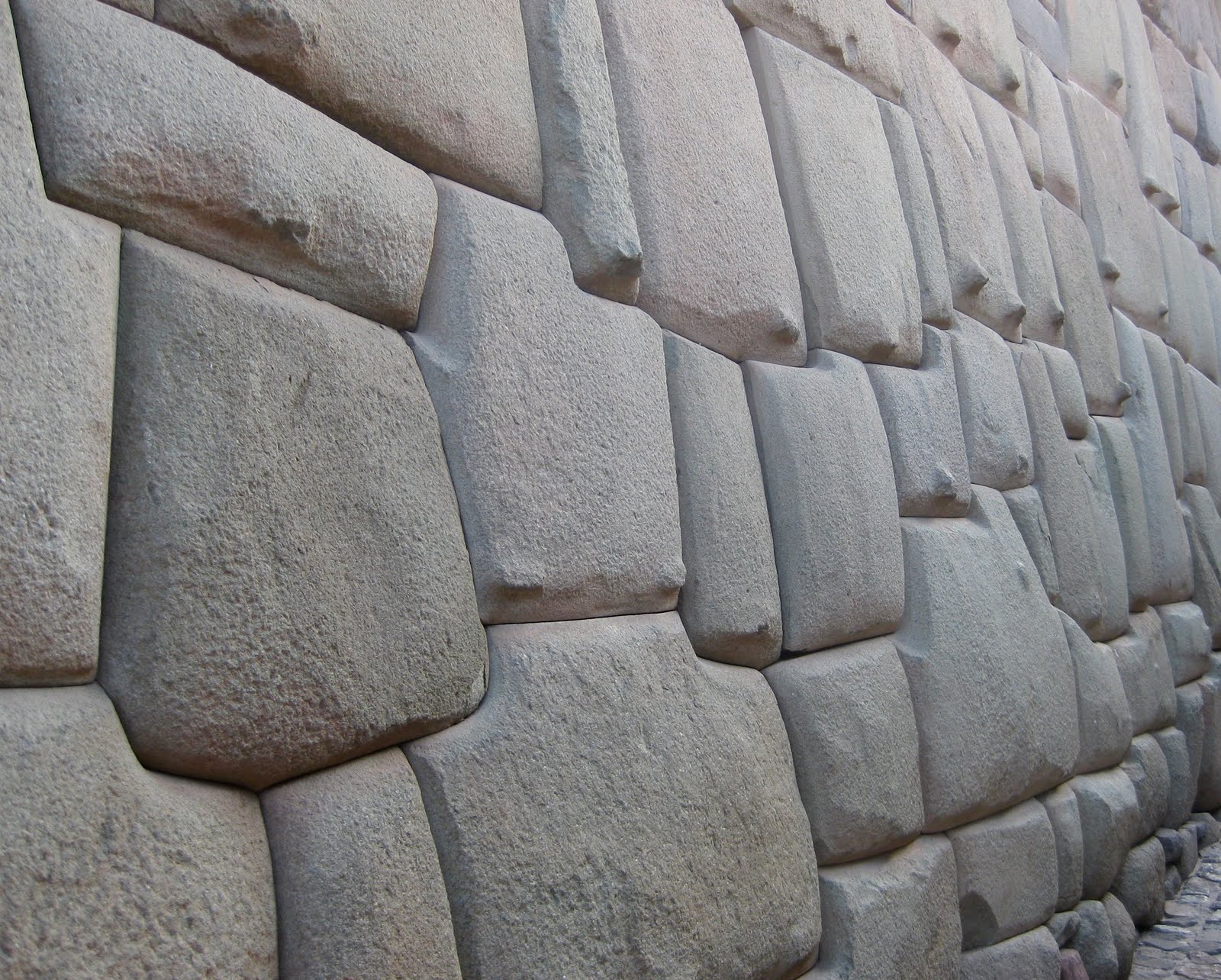
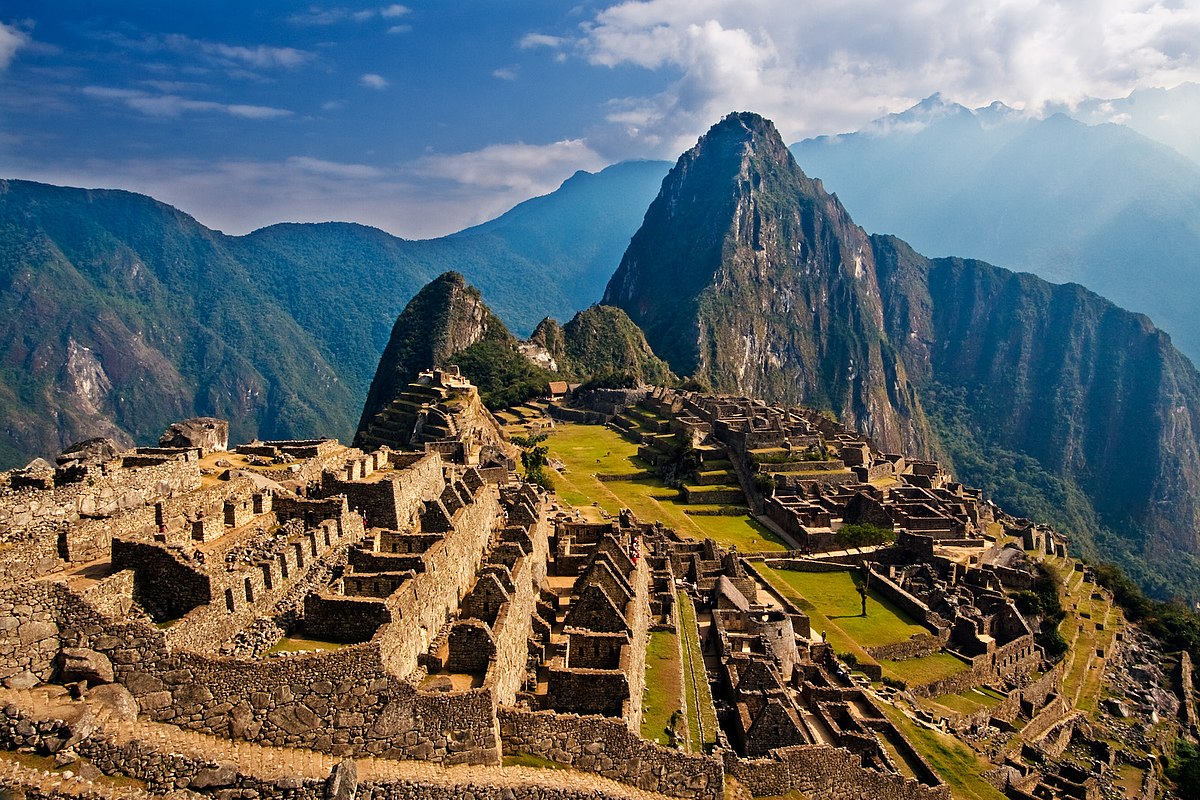
Machu Picchu
1450
Built by Pacacutec Inca Yupanqui
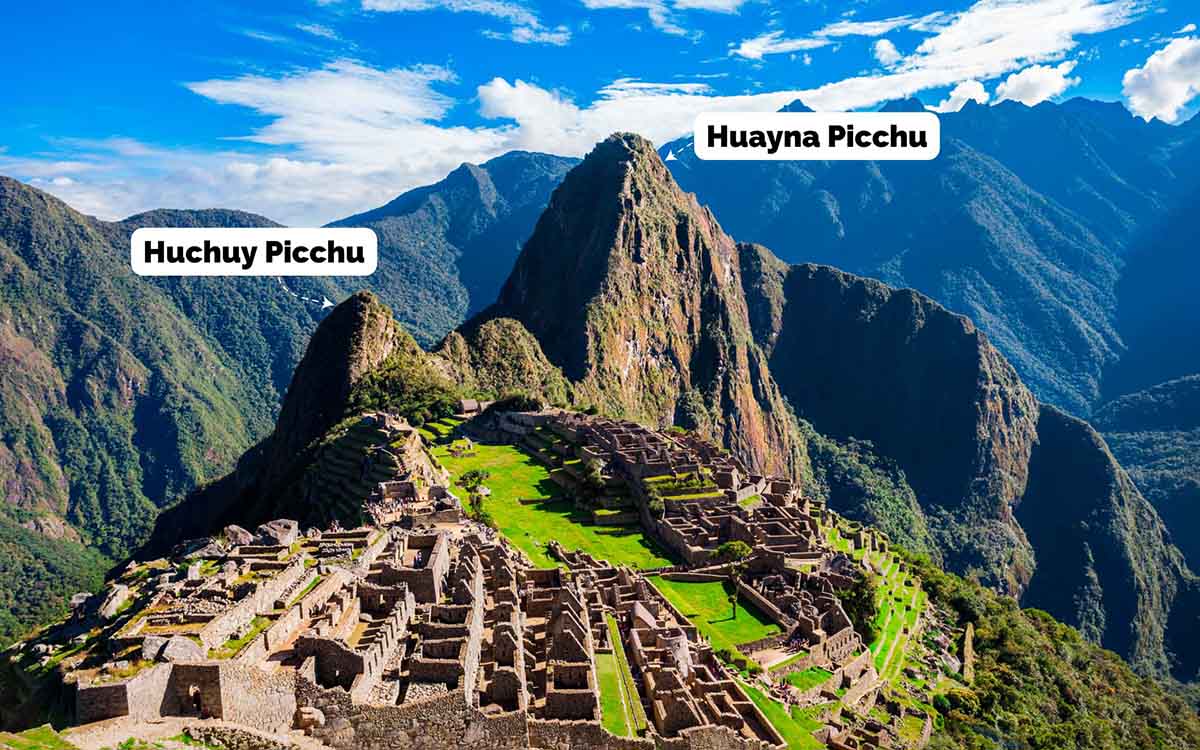
Mount Huayan Picchu
Young Mountain
Behind Machu Picchu
Hiram Bingham
During 1911-1912 claimed to have found Machu Picchu
National Geographic helped support his discovery and published it for their first magazine
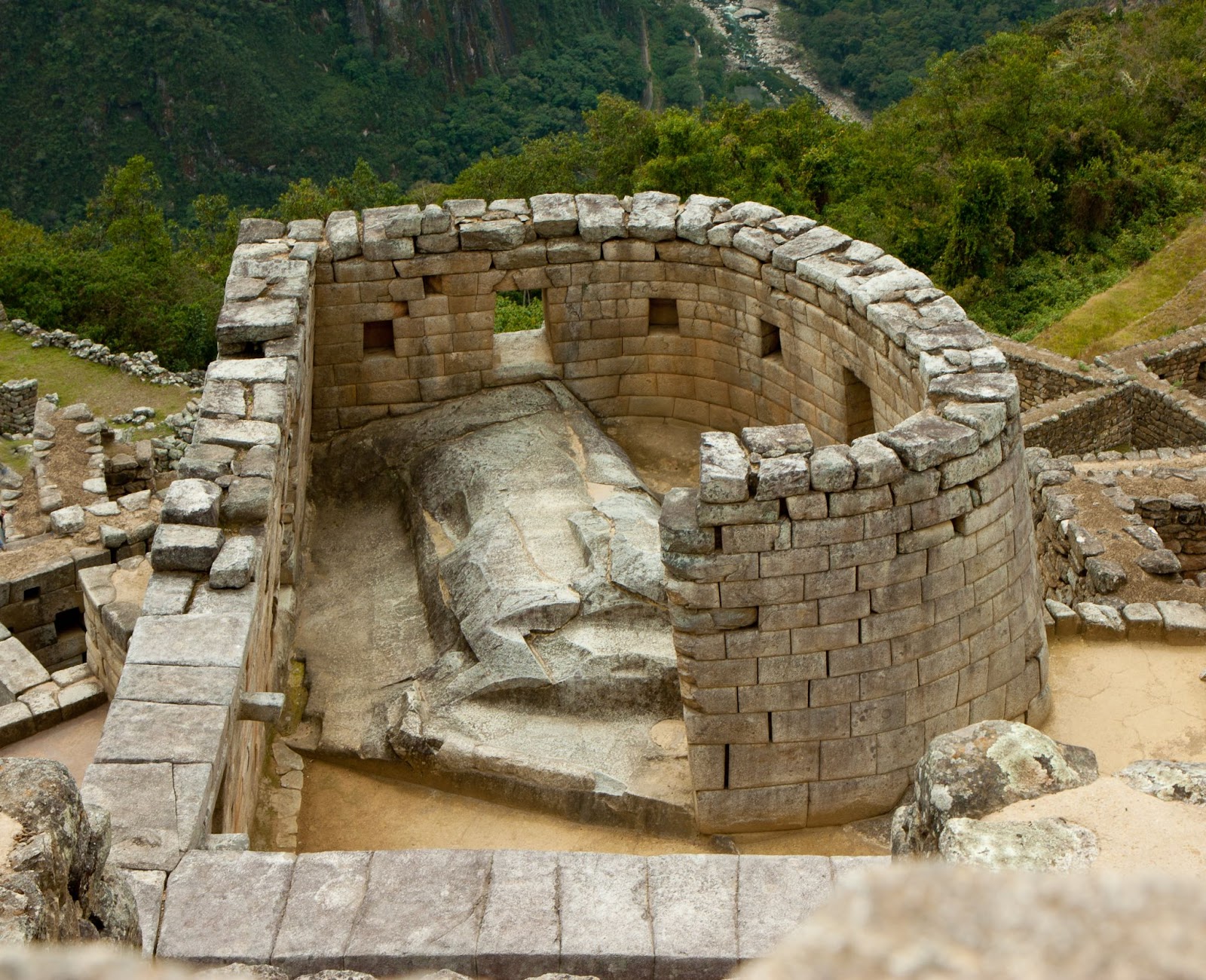
Temple of the Sun
Solar Observatory
Priests house to the right of it
Below the temple, support and stairs are carved into the natural rock
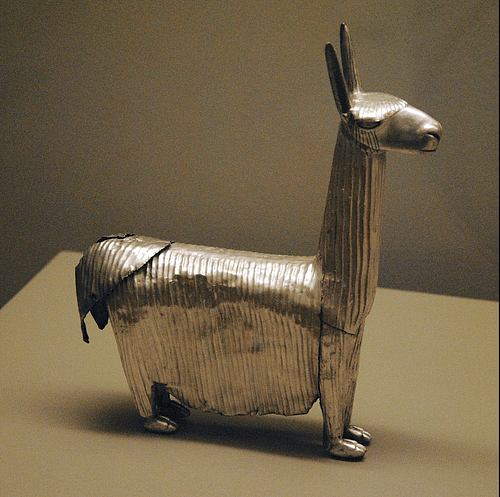
Inca Artifacts
Spanish melted almost every Inca artifact of silver or gold
Inca valued silver and gold cuz it reminded them of the moon and sun
Aftermath of Spanish Conquest
Native American populations declined sharply due to disease from Europeans
Populations declined up to 90%